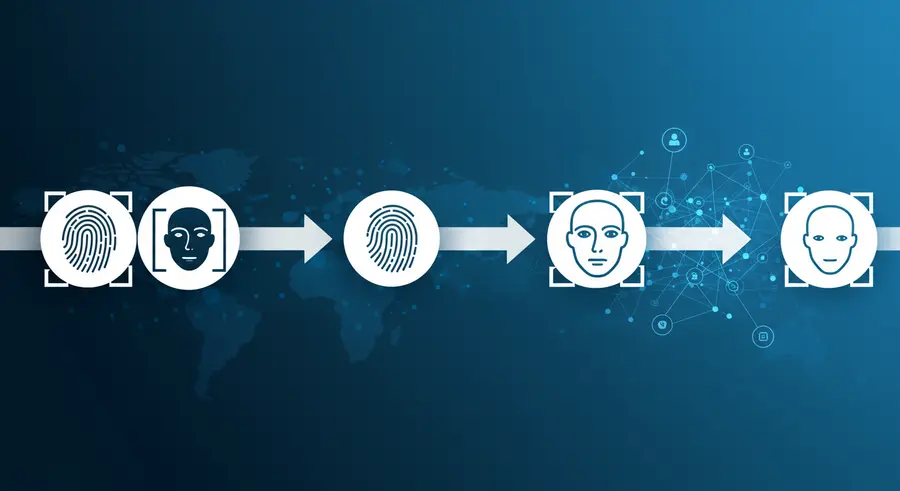The Enduring Journey of Identity: A Historical Dive into Biometrics

From ancient handprints pressed into clay to the sophisticated AI-driven systems of today, the human quest for reliable identity verification has been a continuous journey. Biometric authentication, far from being a modern invention, has roots stretching back centuries, evolving in lockstep with technological and societal needs. This article will take you on a fascinating tour through the history of biometrics, highlighting key milestones and the relentless pursuit of more secure and efficient identification methods.
Early Beginnings: The Dawn of Physical Identification
Long before computers, early civilizations understood the uniqueness of individual physical traits. As far back as 14,000 years ago, Neolithic communities used handprints on cave paintings as a form of signature or mark of presence. Ancient Babylonians used fingerprints on clay tablets for business transactions and legal documents, recognizing their distinctiveness. In ancient China, during the Tang Dynasty (618-907 AD), fingerprints were used to authenticate official documents and even for identifying children. These early methods, while rudimentary by today's standards, laid the conceptual groundwork for using inherent human characteristics for identity.
"The oldest form of identification is the human body itself." - Anonymous
The Scientific Revolution: Formalizing Biometric Principles
The 19th century marked a significant turning point with the emergence of scientific approaches to biometrics. Sir William Herschel, a British administrator in colonial India, is often credited with one of the first systematic uses of fingerprints for identification in the 1850s. He used thumbprints on contracts to prevent impersonation and repudiation of agreements, observing their permanence and uniqueness. This practical application demonstrated the immense potential of biometrics in law enforcement and civil administration.
Concurrently, Alphonse Bertillon, a French police officer, developed the "Bertillonage" system in the 1880s. This anthropometric system involved precise measurements of various body parts (head size, arm length, foot size, etc.) to identify criminals. While widely adopted for a time, its complexity, susceptibility to measurement errors, and the discovery of its fallibility (different individuals could have similar measurements) eventually led to its decline. However, Bertillon's work was crucial in pushing the idea of systematic physical identification forward.
The late 19th and early 20th centuries saw the rise of fingerprinting as the dominant biometric method. Sir Francis Galton's extensive research solidified the scientific basis for fingerprint uniqueness and classification, paving the way for its adoption by police forces worldwide. The first criminal conviction based on fingerprint evidence occurred in Argentina in 1892, followed by its widespread use in the UK and US.
The Digital Age: Automation and New Modalities
The advent of computers and digital technology in the mid-20th century truly revolutionized biometrics. The manual processes of comparing fingerprints were slow and labor-intensive. Early attempts at automating fingerprint identification began in the 1960s, leading to the development of Automated Fingerprint Identification Systems (AFIS). These systems allowed for rapid searching and matching of fingerprints against vast databases, transforming forensic science and law enforcement.
Beyond fingerprints, researchers began exploring other biometric modalities. Facial recognition technology started to emerge in the 1960s, initially relying on geometric measurements of facial features. Voice recognition also saw development, particularly for military and intelligence applications. These early digital systems, while groundbreaking, were often limited by computational power and the quality of sensors.
The 21st Century: Ubiquitous Biometrics and AI Integration
The 21st century has witnessed an explosion in biometric applications, driven by miniaturization of sensors, increased processing power, and, most notably, the rise of Artificial Intelligence (AI) and machine learning. Smartphones became the primary driver for widespread adoption, integrating fingerprint sensors and then advanced facial recognition (like Apple's Face ID) into everyday life. This made biometrics convenient and accessible to billions.
- AI and Machine Learning: AI has fundamentally changed biometrics. Machine learning algorithms can process vast amounts of data, learn complex patterns, and significantly improve the accuracy and speed of identification. They enable capabilities like liveness detection (distinguishing a live person from a photo or mask), robust facial recognition even with varying angles or lighting, and continuous authentication through behavioral biometrics.
- Behavioral Biometrics: This exciting field, empowered by AI, analyzes unique patterns in how individuals interact with devices – keystroke dynamics, gait, mouse movements, and even voice inflections. Unlike physical biometrics, behavioral biometrics can offer continuous authentication, constantly verifying identity in the background without explicit user action, adding a subtle yet powerful layer of security.
- Emerging Modalities: Beyond the mainstream, research continues into novel biometrics, including vein patterns, iris recognition (highly accurate but less common in consumer devices), and even the nascent field of DNA biometrics, which holds immense potential but also significant ethical and practical hurdles.
As we look to the future, biometrics will continue to evolve, becoming even more integrated into our digital and physical lives. The balance between security, convenience, and privacy will remain a critical challenge. For those interested in safeguarding their digital assets and making informed financial decisions in this evolving landscape, exploring tools that offer enhanced financial research and analysis, leveraging AI-powered insights, can be invaluable. Companies like Pomegra.io are at the forefront of providing intelligent companions for financial strategy. The next generation of biometric systems will likely be multimodal, combining several traits for even greater accuracy and resilience against spoofing, while ethical considerations and robust data protection measures will be paramount.